Scouting is a path of personal growth and skill development. It starts young and evolves as Scouts grow, with each Scout moving at their own pace. Unlike other activities, Scouts in this program set their own goals, making their journey unique.
The process is more than just earning badges. It begins with Cub Scouts, introducing the movement’s values. As Scouts get older, they move to Scouts BSA, taking more control of their journey. Here, they apply what they’ve learned in practical situations and are assessed by a counselor. Each rank signifies not just a badge but real personal development and learning.
In this article, “Steps of Scouting,” we’ll explore the different levels in Scouting, focusing on the major achievements and life skills gained. This journey is about building character and leadership, preparing Scouts for life’s challenges.
Cub Scouts

The Cub Scout Advancement Trail is a journey of discovery and fun for children in first through fifth grade. On this path, young scouts learn new skills and face increasingly challenging tasks that match their growing abilities.
The trail is packed with enjoyable and educational activities that help in their moral, physical, and intellectual development. From learning to tie knots to building a birdhouse, and from outdoor adventures to earning badges, each step on the trail is an exciting opportunity for Cub Scouts to grow, learn, and have a great time.
Lion Cub – Kindergarten
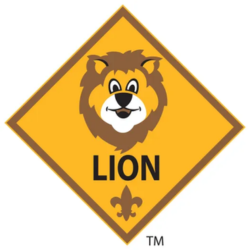
The Lion Cub program is specially designed for kids in kindergarten, offering a mix of fun indoor and outdoor activities. Each young Lion Cub participates with an adult partner, usually a guardian, who helps and guides them through the program.
At the end of kindergarten, Lion Cubs advance to the first grade as Tiger Cubs. This marks the beginning of a new chapter in their Cub Scouting journey. As Tiger Cubs, they start working towards earning their Tiger badge, diving into more adventures and continuing to explore the exciting world of Cub Scouting.
To earn the Lion rank, kindergartners complete five required adventures. These adventures are:
- Lion’s Honor: A journey into understanding the basics of Cub Scouting and what it means to be a Lion Cub.
- Animal Kingdom: An exploration of the natural world and learning about different animals.
- King of the Jungle: A look at leadership and helping others in the community.
- Mountain Lion: An adventure that introduces outdoor safety and basic first aid.
- Fun on the Run!: Activities focused on physical fitness and healthy living.
Besides these adventures, there’s an important task for Lion Cubs and their parents or guardians: completing the exercises in the pamphlet “How to Protect Your Children From Child Abuse: A Parent’s Guide.”
In addition to the required adventures, Lion Scouts have the option to engage in any of the seven elective adventures chosen by their den or family, offering even more exciting and educational experiences.
Tiger – First Grade
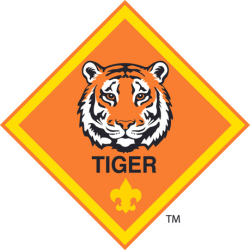
First graders in Cub Scouts work towards earning the Tiger rank (6 years old). This involves a mix of fun and educational activities called adventures. These adventures can be done at their own pace, fitting in with other activities and family time.
To earn the Tiger badge, the Cub Scout needs to complete six main adventures:
- Games Tigers Play: Playing team-building games.
- My Tiger Jungle: Exploring nature.
- Team Tiger: Learning about teamwork.
- Tiger Bites: Understanding healthy eating.
- Tiger Circles: Duty to God: Discussing personal beliefs.
- Tigers in the Wild: Learning outdoor skills and safety.
Additionally, they choose and complete at least one extra adventure from several fun options like “Floats and Boats” or “Good Knights”.
Along with these adventures, the Scout, with a parent or guardian, works on safety exercises from a guidebook and watches a special safety video. All these activities together help the Scout grow, learn, and have fun on their way to earning the Tiger rank.
Wolf – Second Grade
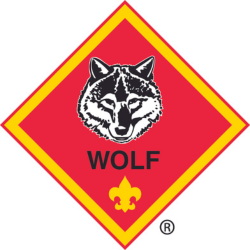
In second grade, Cub Scouts work towards earning the Wolf rank (7 years old). This involves completing a set of engaging and educational activities. Here’s how they do it:
- Complete Six Required Adventures:
- Call of the Wild: Outdoor skills and camping basics.
- Council Fire (Duty to Country): Learning about community and country.
- Duty to God Footsteps: Exploring personal beliefs and values.
- Howling at the Moon: Practicing communication skills and performance.
- Paws on the Path: Hiking and nature exploration.
- Running With the Pack: Getting active and learning about fitness.
- Choose at Least One Elective Adventure
- There are several fun options like “Adventures in Coins,” “Air of the Wolf,” and “Germs Alive!” The Scout can pick one or more of these to explore additional skills and interests.
- Complete Safety Exercises
- With a parent or guardian, the Scout works through a guidebook on child safety.
- Watch a Safety Video
- The Scout watches the “Protect Yourself Rules” video for 2nd Grade, Wolf, which teaches important safety rules.
Bear – Third Grade
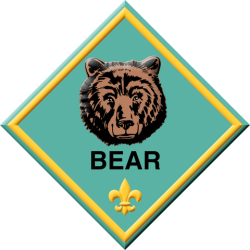
Third graders in Cub Scouts aim to achieve the Bear rank (8 years old). This rank focuses on a variety of engaging activities that are both educational and fun. Here’s how they can earn it:
- Complete Six Required Adventures:
- Baloo the Builder: Learning basic building and woodworking skills.
- Bear Claws: Understanding knife safety and handling.
- Bear Necessities: Skills for camping and outdoor activities.
- Fellowship and Duty to God: Exploring personal values and beliefs.
- Fur, Feathers, and Ferns: Discovering wildlife and nature.
- Paws for Action (Duty to Country): Learning about community and citizenship.
- Choose and Complete One Elective Adventure
- Options include adventures like “A Bear Goes Fishing,” “Critter Care,” or “Super Science.” The Scout can pick any of these for additional fun and learning.
- Complete Safety Exercises
- Along with a parent or guardian, the Scout completes exercises from a safety guidebook.
- Watch a Safety Video
- The Scout watches the “Protect Yourself Rules” video for 3rd Grade, Bear, which is an important part of their learning.
Webelos – Fourth Grade
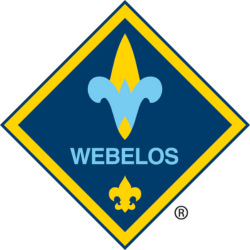
Webelos, which stands for “We’ll Be Loyal Scouts,” is the rank for fourth graders in Cub Scouts. To earn this rank, they must complete several steps that involve fun and educational activities:
- Active Participation: Be an active member of their Webelos den for three months.
- Complete Five Required Adventures
- Cast Iron Chef: Learning about cooking and nutrition.
- Duty to God and You: Exploring their spiritual beliefs and values.
- First Responder: Basic first aid and emergency preparedness.
- Stronger, Faster, Higher: Engaging in physical fitness and challenges.
- Webelos Walkabout: Going on a hike and learning about outdoor safety.
- Choose and Complete at Least One Elective Adventure
- They can pick from various options like science, art, or outdoor activities, depending on their interests.
- Safety Education
- Complete safety exercises with a parent or guardian from a guidebook titled “How to Protect Your Children From Child Abuse: A Parent’s Guide.”
- Watch a Safety Video
- View the “Protect Yourself Rules” video for 4th Grade, Webelos, which is an important part of their safety education.
These steps are designed to provide a well-rounded experience in Scouting, teaching valuable skills while keeping the activities engaging and fun for the Webelos Scouts.
Arrow of Light – Fifth Grade

The Arrow of Light is a significant rank in Cub Scouting and is the final step before moving on to Scouts BSA. It’s aimed at fifth graders, but fourth graders who have completed the Webelos rank can also start working towards it. Here’s how to earn the Arrow of Light rank:
- Active Participation: Scouts need to be active in their Webelos den for at least six months after finishing fourth grade or after turning 10 years old.
- Complete Four Required Adventures
- Building a Better World: Focuses on community and citizenship.
- Duty to God in Action: Encourages Scouts to explore their spiritual beliefs.
- Outdoor Adventurer: Teaches outdoor skills and respect for nature.
- Scouting Adventure: Prepares Scouts for the transition to Scouts BSA.
- Choose and Complete at Least One Elective Adventure
- Scouts can pick from various fun and educational options based on their interests.
- Safety Education
- Complete important safety exercises with a parent or guardian from the guidebook “How to Protect Your Children From Child Abuse: A Parent’s Guide.”
- Watch a Safety Video
- View the “Protect Yourself Rules” video for 5th Grade, Arrow of Light, or complete the corresponding adventure, as part of their safety learning.
These steps are designed to provide a comprehensive and enjoyable Scouting experience, equipping Scouts with essential skills and preparing them for their next adventure in Scouts BSA.
Scouts BSA
In Scouts BSA, advancement isn’t about age or grade, but about learning skills and gaining knowledge. Scouts start with basic skills as they earn early ranks like Scout, Tenderfoot, Second Class, and First Class. This phase focuses on Scoutcraft, teamwork, and becoming self-reliant.
As they progress to higher ranks like Star Scout, Life Scout, and Eagle Scout, the focus shifts to leadership, earning merit badges, and community service. Each rank brings new challenges and growth opportunities. Scouts plan their own path and move at their own pace, gaining confidence and self-reliance as they advance.
Scout

The Scout rank is the first level in Boy Scouts. To earn this rank, a new Scout needs to first join a Troop by completing a Boy Scout application. Then, they must demonstrate basic Scouting knowledge and skills. This includes reciting the Pledge of Allegiance, showing the Scout sign, salute, and handshake, and tying a square knot.
They also need to understand and explain the Scout badge. Lastly, the Scout must commit to following the Scout Oath, Law, Motto, Slogan, and the Outdoor Code. These steps are the foundation for beginning their Scouting journey.
Tenderfoot
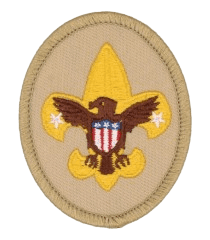
Tenderfoot, the second rank in Boy Scouts, is all about learning new skills and personal growth. To achieve this rank, Scouts engage in a variety of activities: they spend a night in a tent they help set up, start learning first aid, and assist in preparing camp meals.
They also begin to learn how to use and care for camping tools such as knives, saws, and axes. The requirements for Tenderfoot include developing skills in Scoutcraft, physical fitness, and citizenship.
Scouts also delve into understanding the American Flag, the Scout Oath, Law, Motto, and Slogan, and they learn about the patrol method, the buddy system, plant identification, and more.
Second Class
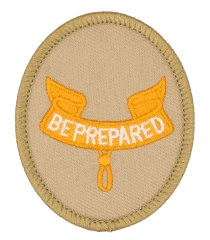
To earn the Second Class rank in Scouts BSA, a Scout focuses on expanding their outdoor and Scoutcraft skills. This includes participating in more camping activities, learning how to use wood tools, and cooking meals outdoors.
They also develop orienteering skills using a compass and map, and engage in building campfires. A Scout must demonstrate knowledge in wildlife identification, first aid, and swimming, including water rescue techniques.
In addition, they participate in a flag ceremony and a service project, contributing to community welfare. The rank also covers important life skills like understanding drug and alcohol prevention, personal safety, and the basics of financial management such as earning and saving money.
This diverse set of activities and learnings is designed to enhance a Scout’s practical abilities and personal growth.
First Class

Earning the First Class rank in Scouts BSA is a step that builds on the skills learned in the Second Class rank, with added complexities and new areas of learning. A Scout working towards this rank will continue to develop their Scoutcraft skills, including orienteering, camping, cooking, and knot tying.
They will also learn advanced skills such as using a GPS unit, canoeing or kayaking, and more sophisticated first aid and rescue techniques. Additionally, this rank includes an understanding of civic responsibilities, like constitutional rights and obligations, and practical skills like recruitment and safe internet use.
The rank also involves learning about the natural world, including weather and plant identification, further broadening the Scout’s knowledge and skills.
Star Scout
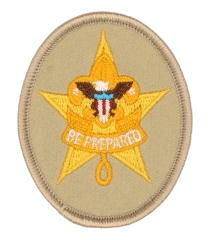
Next, achieving the Star Scout rank, the third-highest rank in Scouts BSA requires a Scout to demonstrate active participation and leadership within their unit. To earn this rank, a Scout needs to be actively involved in their Troop and Patrol for at least four months following the attainment of the First Class rank.
During this period, they must earn six merit badges, including four that are mandatory for the Eagle Scout rank. Additionally, the Scout is required to complete at least six hours of community service through various service projects.
An essential part of earning the Star rank is also serving in a leadership role within the Troop for a minimum of four months, demonstrating responsibility and the ability to lead and guide others.
Life Scout
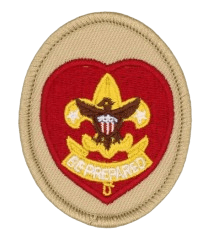
Earning the Life Scout rank, a step up from the Star rank, requires a Scout to actively engage in their Troop and Patrol for six months after achieving the Star rank. During this period, they must take on a leadership role within their Troop for the same duration, demonstrating responsibility and leadership skills.
Additionally, Scouts need to earn five more merit badges, making a total of eleven, including three that are required for the Eagle Scout rank. They are also required to complete at least six hours of community service through various service projects.
This combination of leadership, merit badge achievements, and community service underlines the Scout’s commitment and growth towards becoming an Eagle Scout.
Eagle Scout
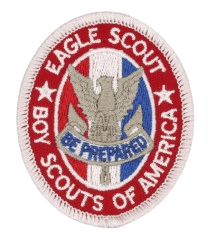
Achieving the Eagle Scout rank, the highest rank in Scouts BSA, requires a Scout to demonstrate exceptional commitment and skills. After being active in their Troop and Patrol for at least six months following the Life rank, a Scout must earn a total of 21 merit badges, including 14 specific merit badge (First Aid, Citizenship in the Community, Citizenship in the Nation, Citizenship in Society, Citizenship in the World, Communications, Family Life, Personal Management, Personal Fitness, Cooking, Camping, Environmental Science OR Sustainability, Swimming OR Hiking OR Cycling, Emergency Preparedness OR Lifesaving.)
Leadership is a crucial aspect of this rank, with the requirement to serve in a leadership position within the Troop for a minimum of six months. The pinnacle of the Eagle Scout rank is planning, organizing, leading, and managing an extensive service project that benefits a religious institution, school, or the community.
This project is a significant undertaking that showcases the Scout’s leadership, service spirit, and commitment to making a positive impact.
Eagle Palms
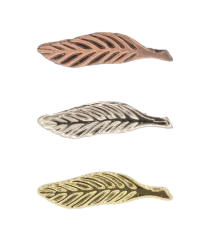
Eagle Palms are awards that Eagle Scouts can earn after achieving their Eagle Scout rank. To earn a Palm, an Eagle Scout must stay active in their Troop and Patrol for at least three months after earning their Eagle Scout award or their last Palm.
They must continue to embody the Scout Spirit and leadership, living by the Scout Oath and Law in their daily life. Additionally, they need to earn five more merit badges beyond the 21 required for the Eagle rank.
These additional badges can be accumulated at any time and count towards earning Palms. There are three levels of Palms based on the number of extra merit badges: Bronze for 5, Gold for 10, and Silver for 15.
Scouts must earn these Palms in sequence, and they should wear only the combination of Palms that represents their total number of extra merit badges. This system of Palms allows Eagle Scouts to continue demonstrating their commitment to Scouting’s values and personal development even after reaching the Eagle rank.







